
This might be one of the most eclectic TBR piles I have ever had. Not pictured: Titus Andronicus by William Shakespeare.
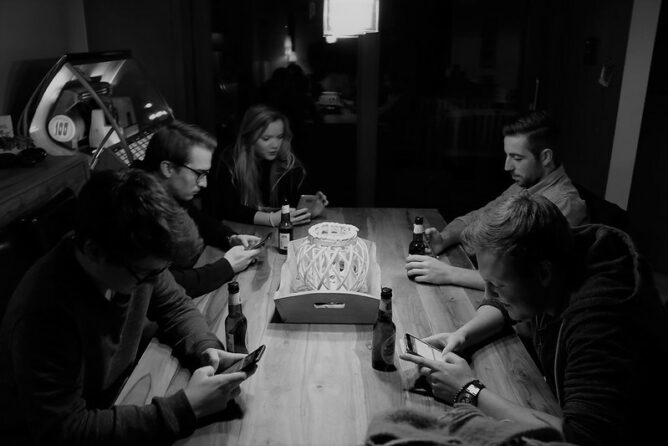
Last week, I gave a lightning round talk at the 2024 SCELCapalooza annual conference on the utility of email as an outreach tool for academic libraries. “Wait,” you are probably telling yourself, “what year is it? Are we really talking about email marketing again?”
Admittedly, this opportunity to present was a self-challenge: could I build an argument that in today’s social media rich landscape email was the most effective tool in our digital outreach toolkit? Turns out, I could and it might be. Since the arrival of Gen Z in institutions of higher ed, and especially following the pandemic, email seems to be experiencing a renaissance.
The conference limited the lightning round talks to seven minutes, so I had to leave out much of the context and nuance. It’s not quite as simple as I make it out to be, but like any good TED talk, the point is to get you to rethink your assumptions. And what we know about how students use email is changing.
Here is the transcript from my talk. I believe the slides will be available soon at the Sched link above. Enjoy!
Howdy, ya’ll. My name is John Jackson. I am the Head of Outreach and Engagement for the William H. Hannon Library here at Loyola Marymount University. I have almost a decade of experience managing external communications for academic libraries. And I am not here to dump on social media.
In fact, I want to begin by encouraging you to follow @lmulibrary on Instagram. You can scan that code right there. I think our content is amazing! However, I am here to tell you that…. I probably don’t need it. For when it comes to reaching college students, email is the most powerful tool you have in your digital toolkit.
So today I’ll talk briefly about the rise of email over the past 3 years, especially among Gen Z users. I’ll talk about what we’ve done at LMU and end with a few tips for successful email marketing campaigns.
If email is like sending someone a letter, then social media these days is like dropping leaflets from an airplane in the middle of the night. There’s no guarantee you’re going to reach your target and even if you do, most of your target population is asleep. Social media presents two barriers to successful communication: the first is he who shall not be named. [at this point, I showed a slide that simply had the words “The Algorithm.”]
Social media platforms long ago ditched the chronological feed and most have taken the lead of TikTok in featuring For You Pages that prioritize content outside the folks you follow. So even if your library has 10,000 followers on Instagram, there’s no guarantee they will ever see your content.
The second barrier that social media puts up against successfully reaching our students is their own changing usage. All generations, but younger generations in particular, are moving to smaller, more private online communities. 6 out of every 10 users on Twitter stopped using the platform in 2023 and a quarter of those users have no plans in coming back. Instagram’s growth seems to be slowing down among 18-24 year olds. Services like WhatsApp and SnapChat that prioritize private group interactions are on the rise. And as much as people love the library, we’re not going to be added to the group chat. The time and energy we put into creating content for a platform that is not and will not push that content directly to our users is time and energy that could be used elsewhere.
With email, reach is guaranteed. They may not do anything with your email, but they will get it. The same can’t be said of social media content.
In 2021, 93 percent of 15-24yr olds in the U.S. reported using email. No social media platform, with the exception of YouTube, even comes close to that. According to Statista, 46% of people in the US prefer email for communication. Between 2022 and 2026, email usage is expected to grow globally to almost 400 billion emails per year.
This especially holds true among consumers with brand loyalty, like library users. 37% of consumers state it is likely or very likely that their brand’s regular newsletter would influence them to purchase something. In that same study, 57% of responding Gen Zers stated they liked being emailed by brands.
And what about email usage in the university context? According to a 2021 study in the journal E-Learning and Digital Media, email is the most common communication channel between students and faculty. And since the pandemic, according to the journal New Media and Society, college students’ use of email has increased in both volume and frequency. A 2021 study of California community colleges found similar results.
And in one study examining a cross section of almost 2000 college students from public and private institutions across the nation found that email is the preferred mode. We see this pattern repeated over and over again.
Here at LMU Library, we have published a monthly newsletter for the past 14 years that goes out to more than 5000 subscribers. There’s the QR code. I hope you’ll subscribe to it.
In the education industry, open rates for emails average 24%. But at LMU Library, our open rates average 46% and often reach into the 80% range when we segment for specific audiences. Our main Marketing team at LMU sends out weekly emails to all students, and they are seeing open rates averaging close to 50% of the student body. 50%! The lesson here is that students are reading their emails! Which leads me to my final section…
Tip #1: Ask your subscribers what they want and customize accordingly. According to a 2022 study published in the Journal of Research in Interactive Marketing, e-mails customized using volunteered consumer data are 38% more effective than emails that only use observed data or no custom data at all. In one 2023 survey, 69% respondents said they wanted to receive emails that make them feel like a VIP and 70% are willing to share their hobbies with brands they subscribe to. Those numbers are even higher among Gen Z respondents. So ask your subscribers permission to customize based on data they voluntarily give you.
Tip #2: Segment your audience. Take that data and divvy up your subscriber list in meaningful ways. In the least, be sure to segment between faculty, staff and students: don’t send the same email to all groups. If you can get the info, divvy up your distribution lists by college major or by on-campus vs. off campus status. I’ve even seen one library divvy up their email list by the patrons’ book genre preferences. Segment based on action: for example, people who subscribed after attending an event. Most email marketing platforms, like MailChimp and Constant Contact, have this function, but you could even do it in Outlook.
Tip #3: Always Be A/B Testing. What is A/B testing? This is when you send out two, three or more different versions of the same email with slight differences to a portion of your subscribers. Whichever group responds most favorably based on open rates and clicks, that’s the version you then send to the rest of the group. Start with your subject line: try 2-3 different word variations, try including an emoji. Try two versions of the same email with different images. Keep tweaking until you find what works best.
Tip #4: Just like designing for the web, optimize your emails for search. Most folks never delete their emails. So there is a huge benefit to creating emails that are designed to be accessed later. By using keywords in subject lines, headers, and the body content, you can increase the likelihood that students will “re” discover your emails at a point of need.
Finally, Tip #5: It’s the little things that matter. Emails that start with an engaging image are more likely to get opened, especially among Gen Z recipients who like to preview their emails. Those call to action buttons? Including an emoji increases the likelihood that someone will click on it. Even selecting the right sender makes a difference. People want to open emails from someone they trust. Maybe it’s an email from “The William H. Hannon Library” if your library’s name has clout. Or maybe it’s an email from the Dean, if you’re just sending it to faculty. Think about who your audience expects to hear from and customize the sender field accordingly.
In the best of all possible worlds, we’d all have the resources we needed to create a robust, multi-platform digital outreach strategy that balances mobile, email, and social channels to reach all our users wherever they’re at. But we have to choose where to spend our time. Email marketing offers unparalleled advantages above social media through precision targeting and tailored engagement strategies. And it’s where our campus users are at. So before you join the latest social network, love the one you’re with. And make the most of it! Thank you. Please like and subscribe. Here’s how you can contact me on LinkedIn as well as my personal website. Thank you!
Dunne, N. (2021). Communication Technology Within Community Colleges [Ed.D., Brandman University]. In ProQuest Dissertations and Theses (2572604800). ProQuest One Academic. http://electra.lmu.edu:2048/login?url=https://www.proquest.com/dissertations-theses/communication-technology-within-community/docview/2572604800/se-2?accountid=7418
Emma. (2019, March 26). 8 Email marketing best practices for higher education. Email Marketing Software That Works For You | Emma Email Marketing & Automation. https://myemma.com/blog/8-email-marketing-best-practices-for-higher-education/
Emma. (2020, October 19). 6 tactics for successful higher ed email marketing. Email Marketing Software That Works For You | Emma Email Marketing & Automation. https://myemma.com/blog/6-tactics-for-successful-higher-ed-email-marketing/
Faverio, M. (n.d.). Majority of U.S. Twitter users say they’ve taken a break from the platform in the past year. Pew Research Center. Retrieved February 7, 2024, from https://www.pewresearch.org/short-reads/2023/05/17/majority-of-us-twitter-users-say-theyve-taken-a-break-from-the-platform-in-the-past-year/
Hartemo, M., & Link to external site, this link will open in a new tab. (2022). Conversions on the rise – modernizing e-mail marketing practices by utilizing volunteered data. Journal of Research in Interactive Marketing, 16(4), 585–600. https://doi.org/10.1108/JRIM-03-2021-0090
Huebner, C. (2019, January 14). Underestimating the Potential of Email. https://www.insidehighered.com/blogs/call-action-marketing-and-communications-higher-education/underestimating-potential-email
Kaufmann, R., & Vallade, J. I. (2021). Online student perceptions of their communication preparedness. E-Learning and Digital Media, 18(1), 86–104. https://doi.org/10.1177/2042753020950873
Marigold. (2023). Higher Education Forecast: 2023 Consumer Trends Index.
Nguyen, M. H., Gruber, J., Marler, W., Hunsaker, A., Fuchs, J., & Hargittai, E. (2022). Staying connected while physically apart: Digital communication when face-to-face interactions are limited. New Media & Society, 24(9), 2046–2067. https://doi.org/10.1177/1461444820985442
Singh, K. (2023, May 15). Email Marketing for Higher Education: Tips and Best Practices. Modern Campus. https://moderncampus.com/blog/higher-education-email-marketing.html
Swanson, J. A., Renes, S. L., & Strange, A. T. (2020). The Communication Preferences of Collegiate Students. In P. Isaias, D. G. Sampson, & D. Ifenthaler (Eds.), Online Teaching and Learning in Higher Education (pp. 65–78). Springer International Publishing. https://doi.org/10.1007/978-3-030-48190-2_4
Tratnik, A., Gak, D., Baggia, A., Jerebic, J., Rajkovič, U., Grbić, T., Duraković, N., Medić, S., & Žnidaršič, A. (2023). Factors influencing student-professor email communication in higher education. Education and Information Technologies. https://doi.org/10.1007/s10639-023-11944-w
U.S. e-mail usage by age 2021. (2022). Statista. https://www.statista.com/statistics/271501/us-email-usage-reach-by-age/
image credit: remco horbach on flickr (cc-by)
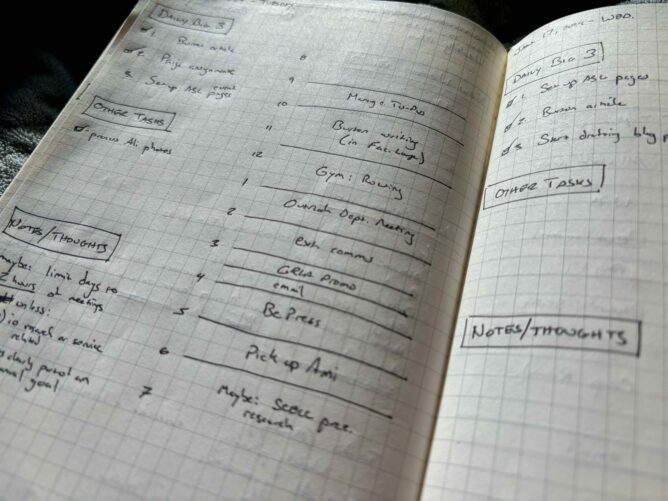
Time is what keeps everything from happening at once.
Ray Cummings, The Time Professor (1921)
If you skimmed through my journals over the past 25 years, stopping every five years to take a look, you would likely discover five completely different ways of organizing my to-do lists. I’ve used notecards and notebooks, Remember the Milk and Todoist, plain text files and markdown. I’ve tried most systems under that sun. But regardless of the platform, I’ve usually modeled my process, to varying degrees, on David Allen’s Getting Things Done method. Since the introduction of time blocking, however, I’ve slowly moved away from the GTD workflow, focusing less on context-matching and more on prioritizing for the time I have in front of me.
My current system is a combination of Cal Newport’s time-blocking system and the format of the Full Focus notebooks. I add the fixed meetings to my schedule and then, examining the time I have open, determine the top 3 things I want to get done. There is a section for “other tasks” as time permits, and the rest of the page is dedicated to daily notes.
It’s a system that works amazingly well. It’s worth noting though that this is the “bottom of the stack” in my planning process. I make my daily plan each morning, but that’s after having already set my weekly, monthly, and quarterly plans in advance. So I don’t have to look at my full to do list (which I keep in Microsoft 360) and I can stay focused on what matters most. I would say 9 times out of 10, I get at least one thing from my “top 3” done every day, and more often than not, I complete all three.
Cory Doctorow on Vice: “This is *not* the moment to be ‘social first.’ This is the moment for POSSE (Post Own Site, Share Everywhere), a strategy that sees social media as a strategy for bringing readers to channels that *you* control.”
Call it spoons, call it energy, or: “If you give your fucks to the unliving—if you plant those fucks in institutions or systems or platforms or, gods forbid, interest rates—you will run out of fucks.”
Adam Kotsko on students’ reading habits: “Large-scale prose writing is the best medium we have for capturing [the world’s] complexity, and the education system should not be in the business of keeping students from learning how to engage effectively with it.”
Benjamin Santos Genta on metaphors: “We owe it to ourselves and others to reflect on the appropriateness of the metaphors we employ to frame the world. These choices – conscious or not – can be constructive or disastrous.”
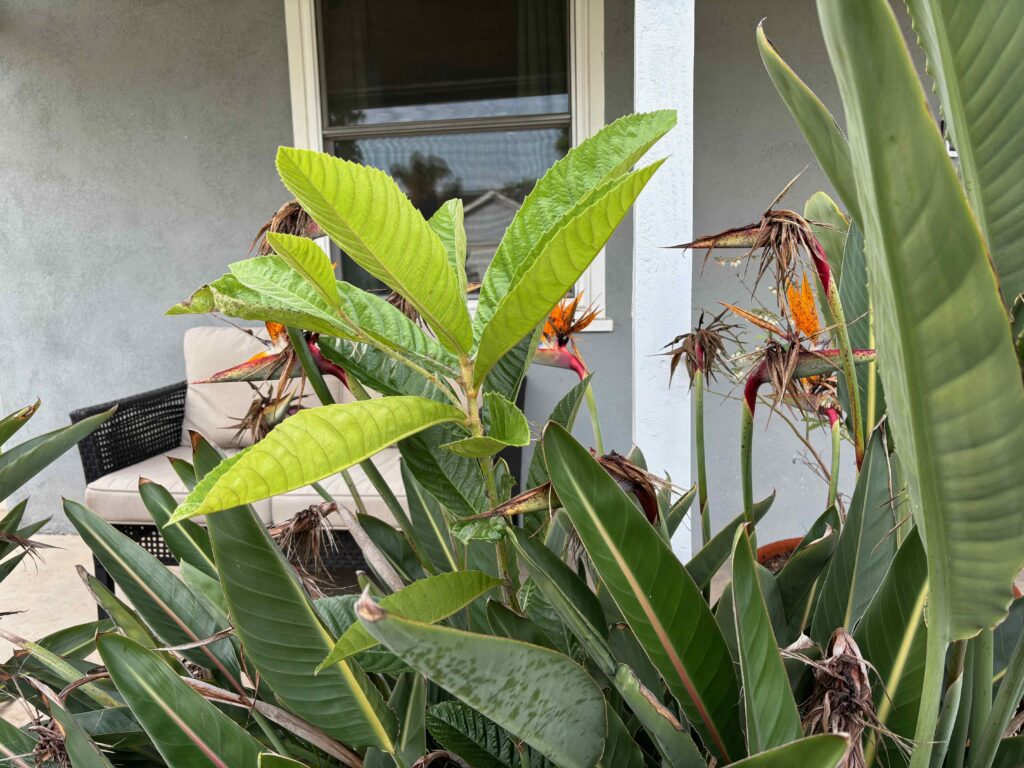
Sneaky little bastard. When we first moved into our house over a decade ago, there was a loquat tree in the backyard. It was one of the first plants I removed because it was growing in and among two other plants. It’s not a fruit I enjoy, but they are all over the neighborhood, so I’m sure this was the result of an errant seed dropped from above.
Occasionally I see posts that look like this: “I’m just starting my MLIS and I don’t know if I should specialize in cataloguing VHS tapes or storytimes for dogs. What do you think I should do?????” Just take courses you think are interesting and take whatever job you can get when you graduate.
MidniteLibrary on Mastodon
Another lovely weekend of domestic activities:
🍫 Made brownies
📕Read a poetry book
🗄️ Cleaned out a cabinet
🌿 Pulled out old plants
🍎 Fed all my fruit trees
🛋️ Bought a new couch
😵 Watched John Wick 4
🎭 Read A Comedy of Errors

Medium to deep ruby colored. On the nose, spicy cherries and oak. On the mouth: oak, pepper, tobacco. The tannins have mellowed out just enough to be interesting. This is a blend of Sangiovese, Merlot, and Cab Sauvignon. Perfect to drink now or wait a few years more.
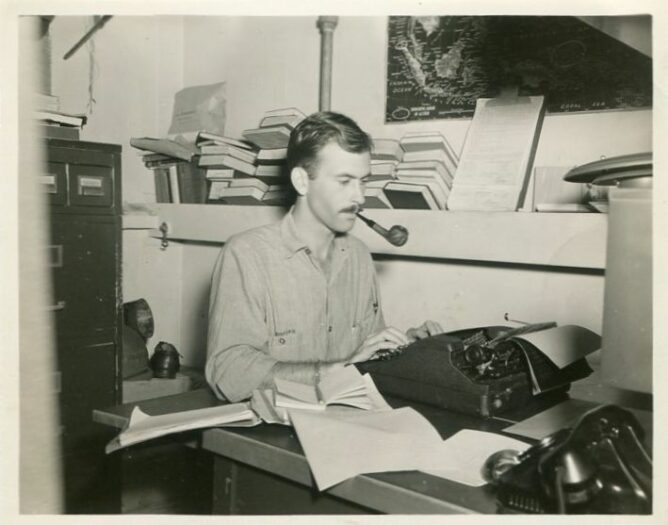
(photo credit: NC State Archives on flickr)
I was brought up to believe that the only thing worth doing was to add to the sum of accurate information in this world.
Margaret Mead, quoted in New York Times, 9 Aug. 1964
If you had told me five years ago that my main source of news would be email newsletters, I would have thought you mad. If you had told me I would also be paying to subscribe to these newsletters, I would have walked away laughing. Obviously, e-newsletters have been around for decades, but the meteoric rise in platforms like Substack was not on my bingo card pre-2019. So I thought I would share what’s currently coming into my inbox on the regular in the hopes that you might find them as enjoyable as I do!
Culture Study: This was the first paid subscription I bought. I heard AHP speak at the 2022 CALM conference and immediately realized that she is someone who deeply understands her audience. An author, podcaster, and gardener, she has an incredible critical eye and the ability to make any subject interesting. I love everything she writes.
Content Prompt [referral link]: Written by Meghan Kowalski, an outreach librarian working in DC, this is a daily list of ideas for social media content creation. I heard Meghan speak at last year’s Library Marketing and Communications conference and was so impressed that I signed up for her newsletter while she was still speaking. It’s a simple, but useful format that also includes prompting questions that I’ve occasionally used in my personal journalling as well.
Link in Bio: This was a recommendation by Meghan. Rachel Karten is a social media consultant who writes about current trends. As someone who only uses social media for work, I don’t often encounter trending content outside my industry, so this is a helpful way for me to know what’s up. Subscribers also get access to a Discord that seems to be mostly populated by social media professionals, so I get to feel like an industry insider.
Here’s a list of all the other newsletters I read regularly. I’m just at the limit of what I have time to read each week, but I do try to read all of these in full when they arrive.
Obviously from the above, you can tell I already spend a not insignificant amount of time reading, but this last week in particular I was feeling nostalgic about the early days of the web. Kyle Chayka, writing for the New Yorker, basically described my exact experience of the web from the 1990s through 2010s. If that makes you long for a simpler time (and smaller web), check out the Diagram Website. I’ve lost myself in here for hours. Need a soundtrack while you surf? Open a tab for Infraordinary FM, an AI-generated broadcast of mundane happenings around the globe.
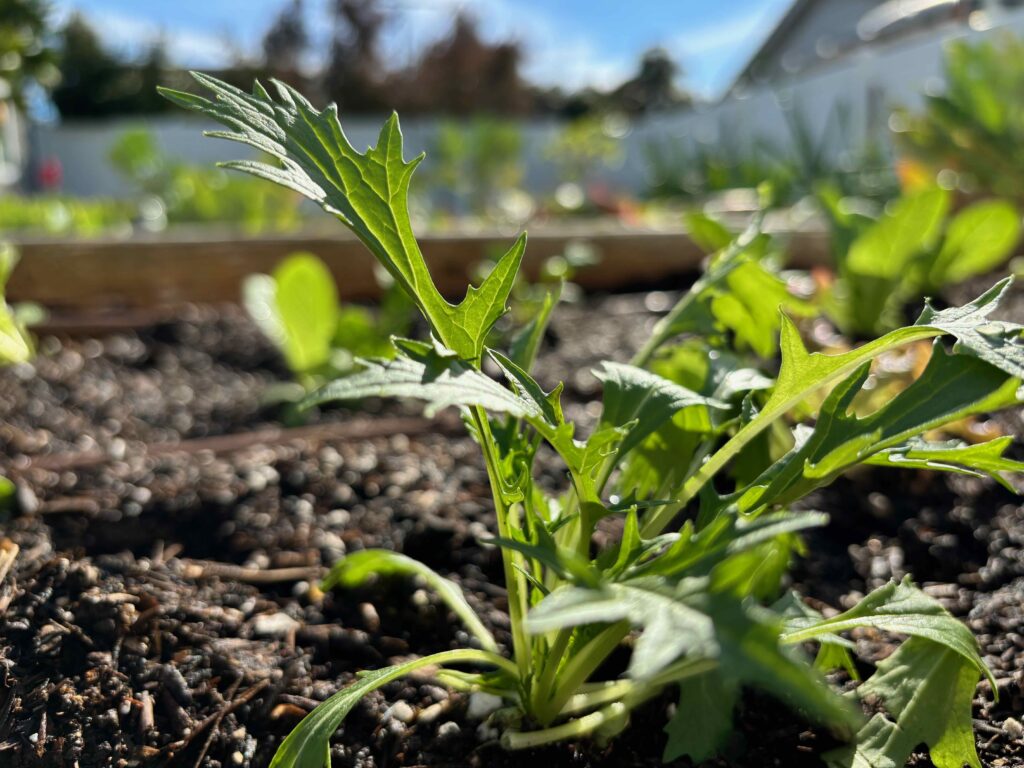
I’m at the end of the winter growing season here in zone 10, so I’m not putting in any seeds yet. Instead, I’ve transplanted in various leafy greens. Once the heat comes back, these won’t last long but it should provide for the occasional salad for the next few weeks.
“Strong’s Concordance” would be a pretty cool name for a band.
@hotdogsladies on Mastodon
Last month, I took over the marketing column for Public Services Quarterly, following Katy Kelly’s 10-year tenure at the helm. To signify the transition, Kelly and I co-wrote an article, “The Eras Tour of library marketing,” reflecting back upon the topics covered under her leadership and looking toward the future.
At one point, I asked Kelly to consider the future of library marketing, and specifically to consider potential threats, to which she responded:
“Lack of respect. Marketing is a management function and library employees who do this work should be compensated at a managerial level or else they will leave, burn out, or quietly quit. In addition, they should be invited to participate in conversations regarding big changes or initiatives at the earliest juncture. Administrators who don’t recognize this will end up with more work and confusion internally and externally.”
Shortly after our article was published, one of my favorite creators, sidneymorss, posted the following on TikTok. The industry is different, but the vibe is the same as Kelly’s quote above. Someone please create a library version!
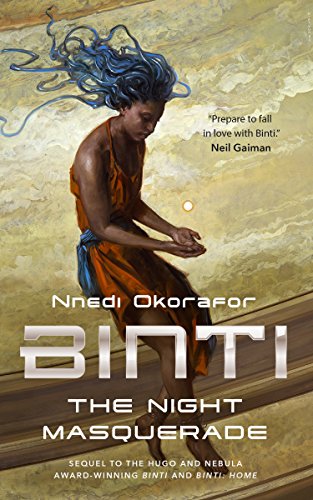
This third book in Okorafor’s Binti series brings the story of the eponymous character to a close. In this final chapter, Binti comes to know her diverse genetic selves in ways that defy her own understanding. Even among her father’s people, she outshines in aptitude and ability, giving a whole new definition to the meaning of harmonizer. Throughout the experience, she stays true to her many selves, but most of all to her family heritage. The emotional arc of this series is perfectly balanced between external and internal struggle. Okorafor’s world building is elegant and subtle, allowing the reader to focus entirely on Binti’s experience. I’m naturally drawn to space opera-type narratives (though even that feels too simplistic a term), and this series did not disappoint. ⭐️⭐️⭐️⭐️
I was very domestic today:

I love it when a plan comes together.
Hannibal Smith, The A-Team
The older I get, the more I enjoy the process of setting goals for the new year. Perhaps I am simply grateful to have been given another year. Maybe I increasingly feel the weight of an ending. Whatever the cause, I am no longer ashamed to say that I enjoy New Year’s planning! (previously: 2023, 2022, 2021). And it has proven successful. While I don’t accomplish everything, I do make notable progress. This past year, for example, I wrote more frequently, I did a better job planning my weekends, and I learned new skills at work.
Once again following in the style of CPG Grey [YouTube], my theme for 2024 is “creativity.” In 2023, I came to the realization: I am stuck, especially at work but also to some extent at home. This feeling of immobility only dissipates when I am engaged in deep creative work: writing, photography, planning, etc. So this year I want to be attuned to opportunities that allow me to exercise my creative faculties.
Years ago, I bought myself a decent EOS Rebel camera and zoom lens. I’ve used it on and off since that time, mostly for photographing work events, but rarely for personal ends. This year, I want to change that and spend some quality time learning (and practicing) how to take better photos, mostly with the DSLR but also with my mobile device. I know many of the basics of the camera’s mechanics and creating a good composition, so I’m starting from a good place. Photography is an art form that I feel, with enough practice and critical reflection, I could get fairly proficient at.
Last year, I worked through The Artist’s Way by Julia Cameron. While I have mixed feelings about whether I would recommend the book, one aspect that I did enjoy was the idea of the “artist date.” Essentially, each week you set aside time to “treat your inner artist”. This could be as complicated as going to a museum or as simple as listening to recordings of ocean waves. I wasn’t successful at doing this every week, but I never regretted the experience when I did. So this year, I plan to make “scheduling my artist date” part of my weekly planning process.
At some point in the past few months, I got it into my head that I wanted to read all of Shakespeare’s plays. It must have been inspired in some part by my daughter’s tiny role as a Windsor child in Merry Wives this past summer. Even after sitting through no fewer than seven full run throughs of the show, I still found new sparks of joy hearing Shakespeare’s words. So my plan is to not only read all his plays, but also to watch at least one, but preferably two, performances. I may try to throw in some critical and derivative works in there, too, as time permits.
In the process of moving to Mastodon, I learned about the Indie Web community and POSSE. I’ve been exploring the websites of users in that community and it has inspired me to flesh out my website considerably. In addition to publishing on my own site and syndicating elsewhere, I plan to add new pages for current projects, things I find interesting, and other evolving projects.
The internet is about to get weird again by Anil Dash
“There should be lots of different, human-scale alternative experiences on the internet that offer up home-cooked, locally-grown, ethically-sourced, code-to-table alternatives to the factory-farmed junk food of the internet.”
Dash’s post contains a number of fascinating examples of the “weird” (read: unique) that I could easily lose myself in for hours.
Top 14 Social Media Trends (2024 & 2025) by Alison Zeller
“Social media usage is expected to remain on an upward trajectory over the next 2-3 years. New features, such as AI and AR, are ensuring that users stay glued to top social media platforms for longer periods of time each day. Brands are taking advantage by increasing their budgets for content creation, influencers, and ads.”
I am skeptical that social media usage will continue to rise, but there is data to support that conclusion. My skepticism comes from what I’ve observed among Gen Z as a more lassie-faire approach to social media: it’s fine, but it’s not essential in the same way that previous generations have (and continue) to approached it.
January 1, 2024 is Public Domain Day by Jennifer Jenkins
“For the vast majority—probably 99%—of works from 1928, no copyright holder financially benefited from continued copyright. Yet they remained off limits, for no good reason.”
Mickey, Disney, and the Public Domain: a 95-year Love Triangle by Jennifer Jenkins
“Disney is both an emblem of term extension and its erosion of the public domain, and one of the strongest use-cases in favor of the maintenance of a rich public domain.”
How to Lose a Library by Carolyn Dever
“Librarians are by profession information wizards, belying any analog-digital binary by instrumentalizing information as useful and as necessary. The job is to connect users and materials, to create that alchemy that blends the stuff and matter of life with the ephemera of knowledge.”
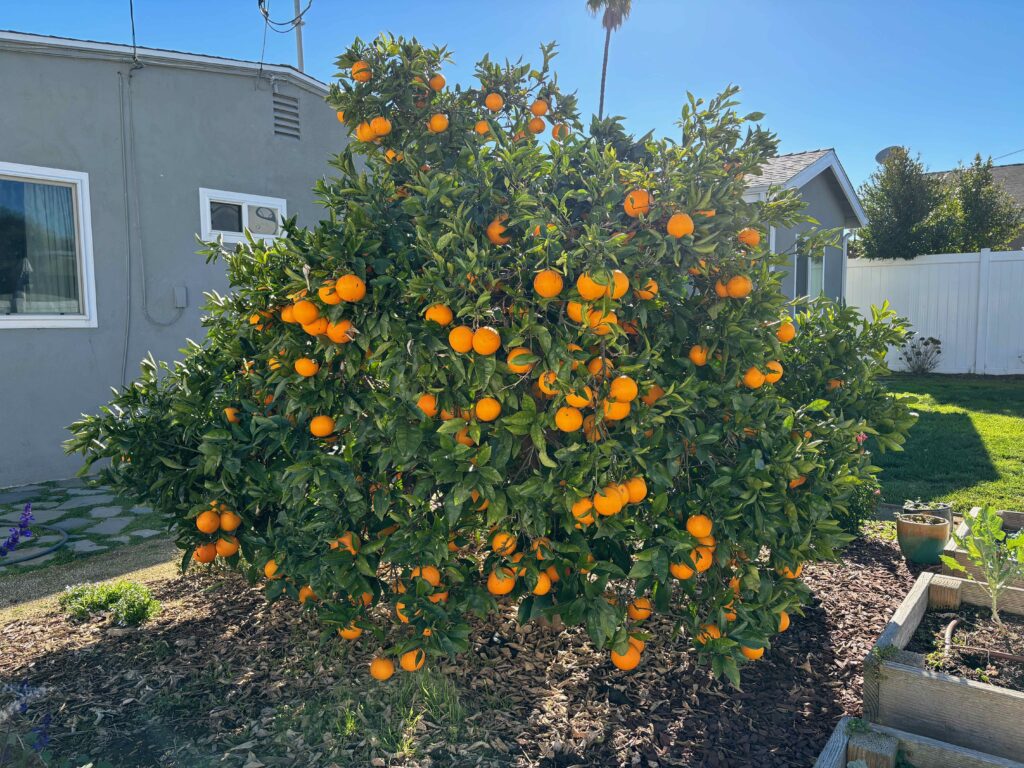
One of the many things I love about gardening in Los Angeles is that I get oranges during the winter months. My Washington navel was so overburdened with fruit this season that one of its lower branches snapped off under the weight a few weeks ago. Normally, these trees need very little pruning, except for diseased branches and those hanging too close to the ground.
My wish for 2024 is that every story that starts with “A new study from the [name of institution] found that” includes the name(s) of the author, the study’s title, and a link to the actual study.
@BuffaloResearch on Mastodon